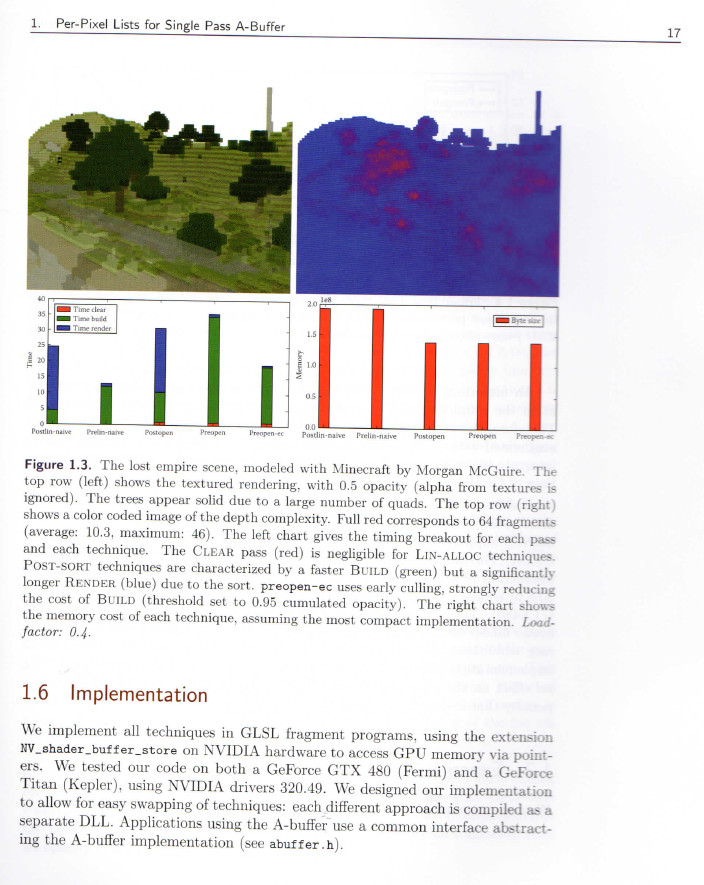Really, the title says it all, the book GPU Pro 5 is shipping. Sadly, there’s no “Look Inside” for the book on Amazon; I’ll hope they at least put the Table of Contents there. You can find a rough Table of Contents on the CRC site; rough in that you can’t see the number of pages for each article. A few articles are quite lengthy: Physically Base Area Lights is 34 pages long, Hi-Z Screen-Space Cone-Traced Reflections is an incredible 44. The rest are in the 10-20 page range.
You can get a taste of the book at the GPU Pro blog, it has previews of a large number of the articles. At $70 this is not a casual purchase, but if you’re a practitioner and just one article saves you 2 hours, the book’s more than paid for itself.
Me, I was amused to see the following, a model from Morgan McGuire’s high-quality model repository – hey, that’s from our world! (And you thought I was done with Minecraft references here.)
